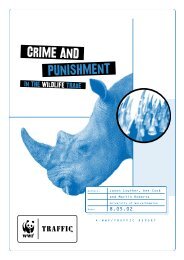In full swing: assessment of trade in orang-utans and ... - WWF UK
In full swing: assessment of trade in orang-utans and ... - WWF UK
In full swing: assessment of trade in orang-utans and ... - WWF UK
Create successful ePaper yourself
Turn your PDF publications into a flip-book with our unique Google optimized e-Paper software.
Figure 10.<br />
Relative proportions <strong>of</strong> seven species <strong>of</strong> gibbon <strong>and</strong> two species <strong>of</strong> <strong>orang</strong>-utan observed at bird markets, <strong>and</strong> held<br />
at wildlife rescue centres <strong>and</strong> zoological gardens.<br />
Impact <strong>of</strong> <strong>trade</strong> on wild populations<br />
Based on the species composition <strong>and</strong> numbers <strong>in</strong> bird markets (2003 data only), species composition <strong>and</strong> numbers <strong>in</strong><br />
wildlife rescue centres, the orig<strong>in</strong> <strong>of</strong> gibbons <strong>and</strong> <strong>orang</strong>-<strong>utans</strong> arriv<strong>in</strong>g at wildlife rescue centres, <strong>and</strong> the species<br />
composition <strong>and</strong> orig<strong>in</strong> <strong>in</strong> zoological gardens, the total number <strong>of</strong> gibbons <strong>and</strong> <strong>orang</strong>-<strong>utans</strong> that are extracted from the<br />
wild annually was estimated. Data collected for this survey was used to calculate observed or estimated numbers <strong>of</strong><br />
<strong>in</strong>dividuals <strong>of</strong> a given species (N), the proportion <strong>of</strong> the total number <strong>of</strong> bird markets (m), wildlife rescue centres (r) or<br />
zoos (z) that was <strong>in</strong>cluded <strong>in</strong> the <strong>assessment</strong> (C), the turnover, i.e., the average amount <strong>of</strong> time a s<strong>in</strong>gle <strong>in</strong>dividual can<br />
be expected to be present at the bird market, wildlife rescue centre or zoo (T), <strong>and</strong> the loss rate, i.e., the total number <strong>of</strong><br />
<strong>in</strong>dividuals that have died as a direct result <strong>of</strong> the captur<strong>in</strong>g or transport<strong>in</strong>g <strong>of</strong> one <strong>in</strong>dividual that is observed dur<strong>in</strong>g the<br />
survey (L).<br />
With two scenarios us<strong>in</strong>g different ranges <strong>of</strong> parameters (one very conservative, the other less so), the mortality rate <strong>of</strong><br />
the wild population was estimated.<br />
The parameters chosen were: Cm = Cz = 0.80, Cr = 0.33 <strong>in</strong> both scenarios; Tm = 12 or 6 months for all species, Tr = 18<br />
or 12 months for all species, <strong>and</strong> Tz = 5 years (gibbons), 7.5 years (Siamangs) <strong>and</strong> 10 years (<strong>orang</strong>-<strong>utans</strong>) <strong>in</strong> both<br />
scenarios; <strong>and</strong> L = 2 or 4.<br />
As can be observed <strong>in</strong> the last two columns <strong>of</strong> Table 11, the impact <strong>of</strong> <strong>trade</strong> as recorded on Java <strong>and</strong> Bali on the wild<br />
populations <strong>of</strong> gibbons <strong>and</strong> <strong>orang</strong>-<strong>utans</strong> differs considerably between species. For some <strong>of</strong> the species that were rarely<br />
recorded (e.g. White-h<strong>and</strong>ed Gibbon <strong>and</strong> Kloss’ gibbon), or that still have relatively large population sizes (e.g.<br />
Mueller’s gibbon) the impact is small, irrespective <strong>of</strong> the scenario adopted.<br />
IN FULL SWING:ASSESSMENT OF TRADE IN ORANGUTANS AND GIBBONS ON JAVA AND BALI,INDONESIA 33


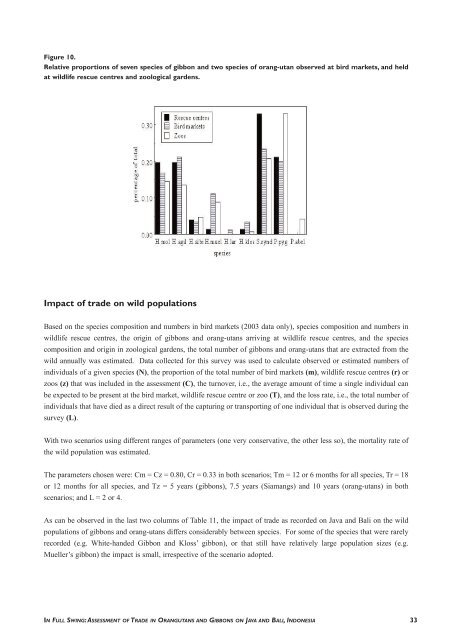
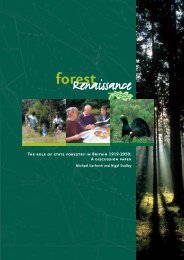
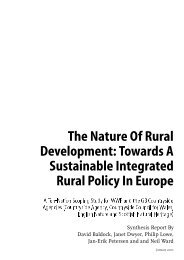
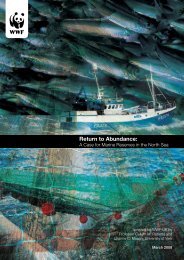

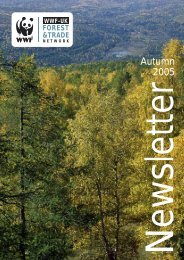

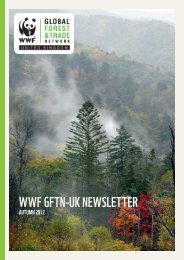
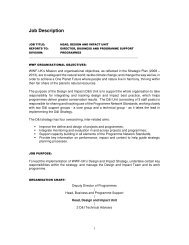
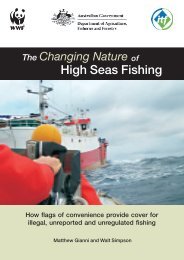
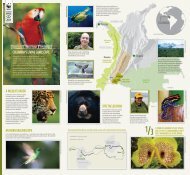
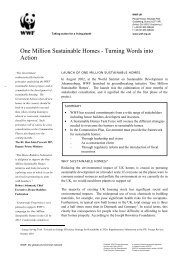
![[PDF] Causes for concern: chemicals and wildlife - WWF UK](https://img.yumpu.com/31929970/1/184x260/pdf-causes-for-concern-chemicals-and-wildlife-wwf-uk.jpg?quality=85)
